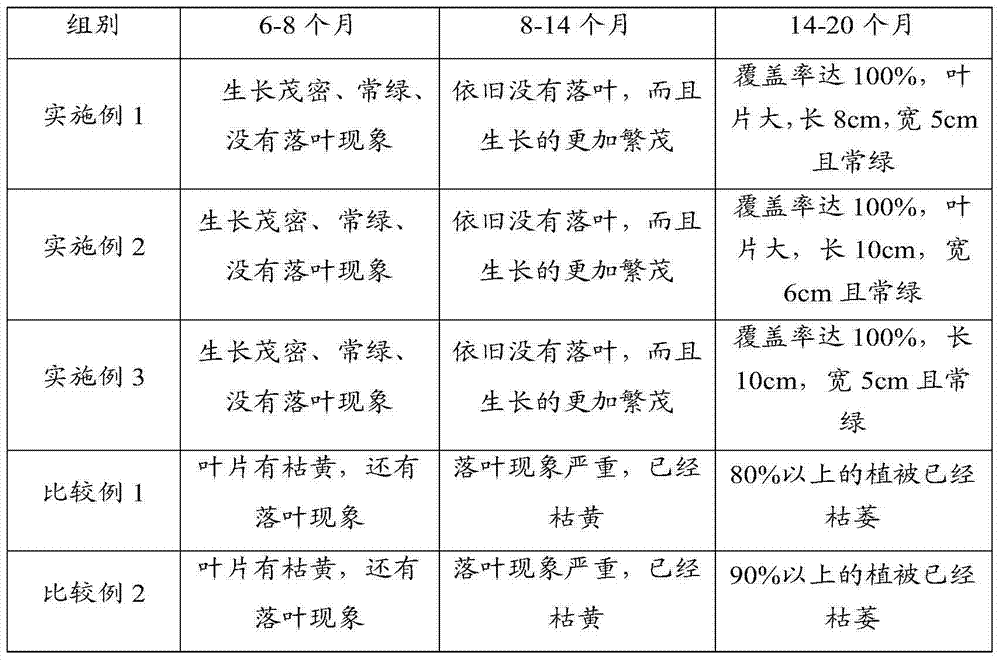Reproduction method for digua fig stems
A technique for spreading rattans and canes, which is applied in gardening methods, botanical equipment and methods, gardening, etc., can solve the problems of growth influence and low survival rate, and achieve the effect of lush growth, large leaves, and high degree of refinement
- Summary
- Abstract
- Description
- Claims
- Application Information
AI Technical Summary
Problems solved by technology
Method used
Image
Examples
Embodiment 1
[0030] The propagation method of pavement vine is as follows:
[0031] 1) Use the cane of the strong ground-paving vine through eight generations of selection as the raw material for propagation, and cut the stem, generally with two nodes, if the joint is dense and the stem is short, it is advisable to use 8-12cm;
[0032] 2) Mark one end of the cut propagation stem, and cultivate it in a culture medium, which is obtained by mixing 70% pond mud and 30% fungus residue, sterilizing and sealing for 12 days ;
[0033] 3) After the seedlings grow 3 leaves, transplant them into the ecological bag for cultivation, and grow them to more than 20cm in the ecological bag to get the floor vines, then put them in bamboo baskets and put them neatly on the car for transportation for slopes greening.
Embodiment 2
[0035] The propagation method of pavement vine is as follows:
[0036] 1) Use the cane of the strong pavement rattan that has been bred for eight generations as the raw material for propagation, first cut off the leaves on the cane, and store it in a professional disinfection box with a size of 40*30cm, so that its relative humidity is controlled at 50-60%, store in a cool place; cut off the propagation stems, with two nodes as the standard, if the joints are dense and the stems are short, it is better to use 8-12cm;
[0037] 2) Mark one end of the cut propagation stems and place them neatly in a container. Since cuttings will not be carried out in a short period of time, the cuts need to be sealed with paraffin to prevent dehydration;
[0038] 3) The stem strips are cultivated in the culture medium, the ambient temperature is controlled at 15-35° C., and the relative humidity is controlled at 50-60%. Obtained after sealed storage for 14 days;
[0039] 4) After the seedlings...
Embodiment 3
[0042] The propagation method of pavement vine is as follows:
[0043] 1) Use the cane of the strong pavement rattan that has been bred for eight generations as the raw material for propagation, first cut off the leaves on the cane, and store it in a professional disinfection box with a size of 40*30cm, so that its relative humidity is controlled at 50-60%, store in a cool place; cut off the propagation stems, with two nodes as the standard, if the joints are dense and the stems are short, it is better to use 8-12cm;
[0044] 2) Mark one end of the cut propagation stems and place them neatly in a container. Since cuttings will not be carried out in a short period of time, the cuts need to be sealed with paraffin to prevent dehydration;
[0045] 3) Cultivate the stems in the culture medium, the ambient temperature is controlled at 15-35° C., the relative humidity is controlled at 50-60%, and the culture medium is a mixture of 75% pond mud and vegetable soil and 25% bacteria Th...
PUM
 Login to View More
Login to View More Abstract
Description
Claims
Application Information
 Login to View More
Login to View More - R&D
- Intellectual Property
- Life Sciences
- Materials
- Tech Scout
- Unparalleled Data Quality
- Higher Quality Content
- 60% Fewer Hallucinations
Browse by: Latest US Patents, China's latest patents, Technical Efficacy Thesaurus, Application Domain, Technology Topic, Popular Technical Reports.
© 2025 PatSnap. All rights reserved.Legal|Privacy policy|Modern Slavery Act Transparency Statement|Sitemap|About US| Contact US: help@patsnap.com

